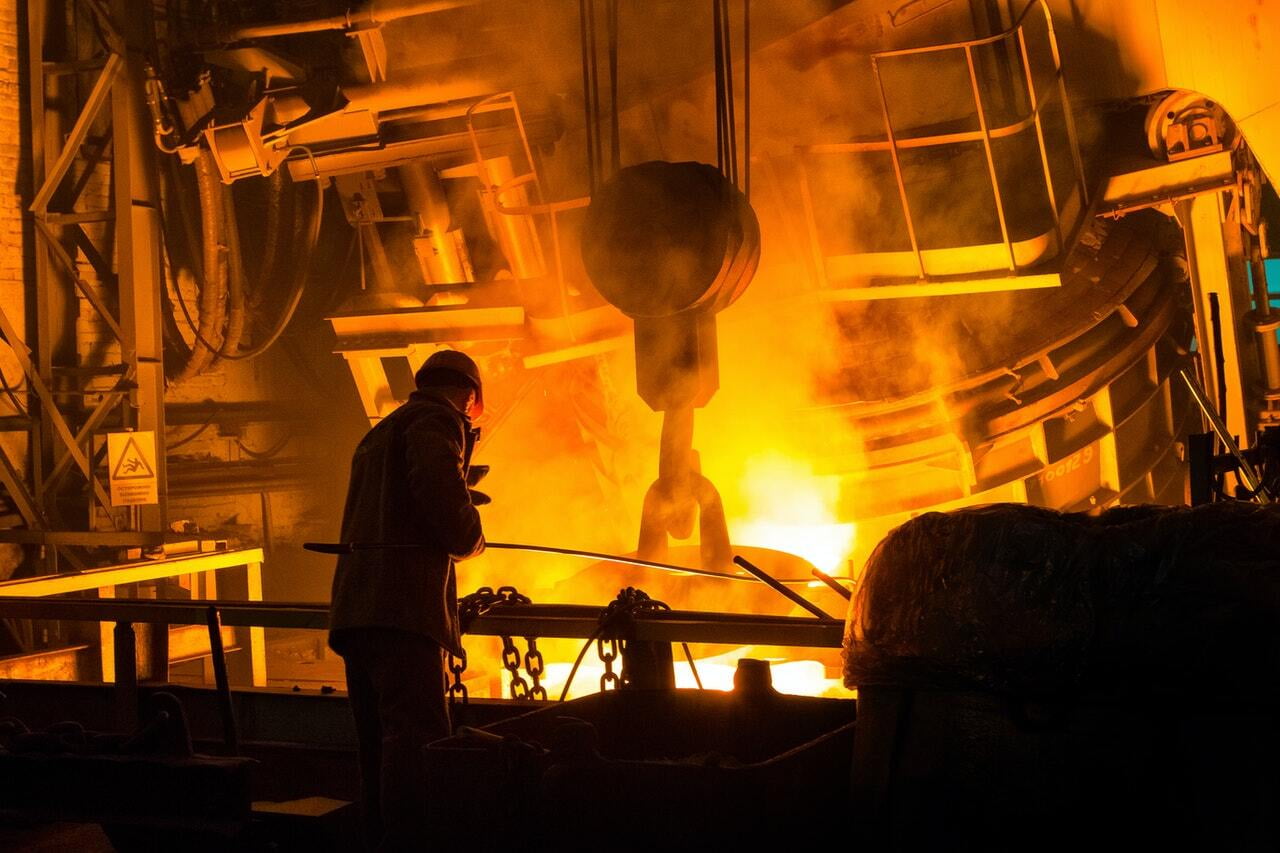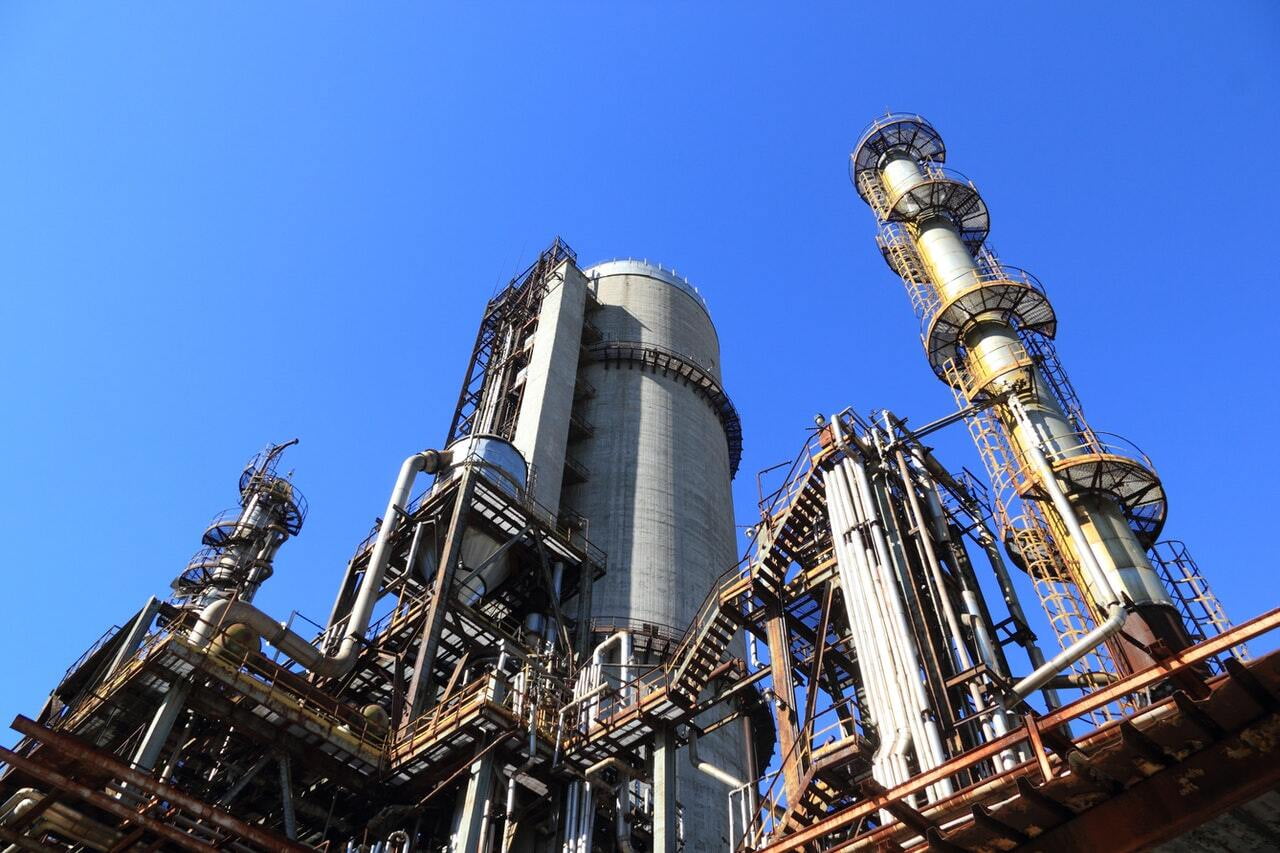Steel Production
Introduction
There are many different processes in making steel and each stage generates potentially hazardous gases. This presents a real opportunity for fixed and portable gas detection.

The process in brief
The three main raw materials used in steel making are iron ore, coke and limestone. The coke ovens manufacture coke from coal and produce coke oven gas, a valuable fuel which is reused. Coke oven gas contains mostly hydrogen and carbon monoxide.
The Iron ore is processed to form a clinker material called sinter in the sinter plant.
At the blast furnace, iron is extracted from the sinter. It is impure iron, known, when in liquid form, as hot metal. The hot metal is transferred to the basic oxygen steel making (BOS] plant where it is converted into steel.
The steel is then solidified as slabs in the continuous casting plant.
The process in detail
Coke Ovens
The coal is crushed to 1/8” or less and sent to the coke ovens. The coke ovens produce many tons of coke per charge. When the cool is turned into coke, some gas is driven off. The gas is purified in the by-products plant where tar, ammonia, napthalene and benzol are removed. The gas, mainly hydrogen and carbon monoxide, is used as fuel in other parts of the plant. The coke is cooled and passed to the blast furnace
Sinter plant
Iron ore is delivered to the sinter plant and emptied into a hopper. The ore is crushed and blended. It is then mixed with limestone, coke, coal dust and water. A conveyor grate carries the mixture under a hood where a gas flame ignites the coke. This creates enough heat to melt the outside of the particles of material, making an iron rich clinker called sinter. The sinter is sized and passed to the blast furnace.
Blast Furnace
Coke is used as a fuel and very high temperature is obtained by forcing a blast of hot air into the bottom of the furnace. As well as iron ore and coke, limestone is fed into the top of the blast furnace. Iron ore contains earthy impurities known as gangule. In the furnace the limestone acts as a flux and helps to separate the iron from the gangule. It combines with these unwanted materials to form a liquid slag. Slag is lighter than the molten iron and because it floats on top, it is skimmed from the surface of the iron during casting. The blast furnace produces a great deal of hot dusty gas, consisting of carbon monoxide with some hydrogen. The dust is removed and the clean gas is stored in a holder far re-use.
(B.O.S.) Plant
The molten iron, known as hot metal, is brought from the blast furnace and transferred into a mixer. The process by which iron is converted into steel is known as the Basic Oxygen Steel making or BOS. process. The molten iron is poured into the steel-making converter. The converter is egg shaped and is mounted on pivots so that it can be rotated. A long water-cooled pipe, known as the ‘lance’ is lowered into the converter and pure oxygen blown through it. Lime is added during the early part of the blow. The oxygen combines with carbon and other elements eliminating these impurities from the molten iron converting it into steel. At the same time, the lime reacts with other impurities to form a slag. The carbon leaves the converter as carbon monoxide gas which is cleaned and reused as a fuel or burned off.
Nitrogen and argon are added for further refining. When the steel is refined it is passed for secondary steel making and continuous casting.
Secondary Steel and Concast
The steel is given one or more extra treatments depending on the grade of steel required. These stages include ladle stirring with argon or nitrogen and vacuum degassing. These processes remove unwanted gases such as those of sulphur and carbon to very low levels.
The steel is passed to a concast machine where it is fed through a tundish into water-cooled moulds to solidify. When solid, it is cut into slabs and passed to the hot mill for re-heating to 1,3000C. Once re-heated it is rolled into strips.
A steel works needs a huge amount of electricity and steam to operate. To reduce the cost and maintain essential supplies, most works have their own power station on site. The burning of gas or cool here produces carbon monoxide.

Summary
Due to the nature of steel making, it is essential that personnel are protected against carbon monoxide poisoning in surrounding areas and asphyxiation due to lack of oxygen when they are carrying out maintenance in confined spaces or ovens. Senko can offer SGT-P personal carbon monoxide monitors far use in and around the blast furnace, power plant and coke ovens. Due to the use of nitrogen and argon in the BOS. and secondary steel making plants, oxygen monitors are also needed. The MGT P fitted with two or three sensors, flammable carbon monoxide, and oxygen, are ideal for use in these areas.
Fixed systems such as the Senko SI-100IM and SI-100IM are used in areas where gas can unexpectedly build up. Areas such as lifts and mess rooms have fixed systems installed, as well as the plant in general. Another application for fixed systems is within the gas holders which contain a piston. Between the piston and the shell of the holder is a rubber seal which requires maintenance. If there is any leakage of gas, the sensors will give an early warning, before maintenance personnel enter the area. Personal monitors such as SGT-P are also used when maintenance is being carried out on the gas holders.
The main contacts for these applications are the health & Safety managers, individual plant managers, line managers, civil managers and department managers.
Steel works also use a lot of contractors. They will often be based on site and have all the same requirements as the plants own employees.

